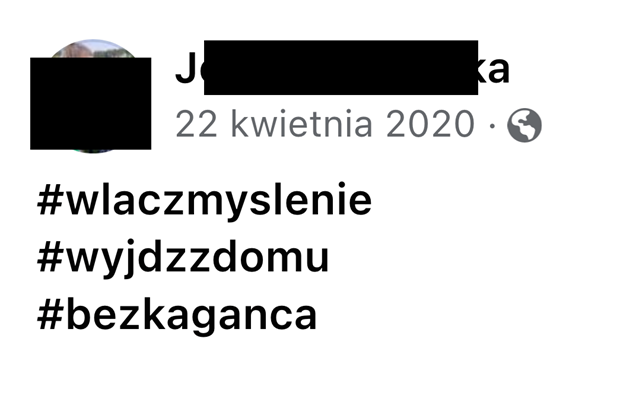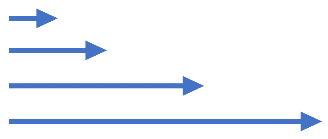Conspiracy theories or genuine stories?
In the late twentieth century, the general social trend was to oppose or to ridicule the propagation of conspiracy theories. In recent decades, however, conspiracy theories have gained a lot of attention. They have moved from the margins into mainstream public debate. Famous and popular figures, whether from the sphere of entertainment, media or politics, are often carriers of conspiracy theories by disseminating them, expressing opinions grounded in them or otherwise openly speculating about or implying conspiracy theories as legitimate. Moreover, due to other parallel events, such as the crisis of democracy, the rule of law and the redefinition of human rights, some spectacular actions of governments have turned out to be based on lies and propaganda, which further confuses the public. Not surprisingly, as a result of whistleblowers, journalistic investigations or lies about alleged weapons of mass destruction in Iraq, citizens have become less and less trusting of institutions and governments.
 Popular hashtags that were spread during the pandemic among Covid deniers: 'start thinking', 'leave home', ‘nomuzzle’.
Popular hashtags that were spread during the pandemic among Covid deniers: 'start thinking', 'leave home', ‘nomuzzle’.
During the pandemic in Poland, there were calls to start thinking. In principle, such slogans are legitimate. The problem, however, is that those who urged people to 'start thinking' denied scientific data about Covid and spread conspiracy theories about supposedly deadly vaccines, a fake pandemic, and medical services making money out of the pandemic. With the pandemic posing a deadly threat, social isolation for many and a whole spectrum of opinions available on social media, it led to emotional and fear reactions in many. People in such a state are easily controlled and willing to believe the most exaggerated stories, including conspiracy theories. Below is one of the more absurd stories published recently.
Strange video about the Russian-Ukrainian war
The fact-checking portal Demagog prepared an analysis of a popular Facebook video, which announced World War III and placed the responsibility for it not on Russia but on Germans, Jews and the Saturian space race. It also argued that Putin isn't actually a significant figure and is in fact a German, a bio-robot and also a Saturian. Poland’s president, Andrzej Duda was declared a Banderite and a Jew. The video also claimed that COVID-19 vaccination is part of mass genocide. The video was been shared 1.2 thousand times (as of…).
The case of this video shows how conspiracy theories about the pandemic can be combined with narratives around the current war in Ukraine. It is therefore worth continuing to use examples of conspiracy theories and disinformation from the pandemic era to educate ourselves on the key questions we should always ask ourselves when encountering sensationalist stories.
“Start thinking” - a test for everyone
The below is a simple test that assesses whether we display conspiratorial or common-sense thinking:
● read the tweet;
● answer the questions under the tweet;
● assess your resistance to conspiracy theories.
 The caption above the image states: “This is a recording from the city of Zamość [in Poland]. On the 1st of August 2021, a woman, wrapped in a plastic bag, was carried out of a vaccination point and into an ambulance. Perhaps the motivation for arson can be found here.”
The caption above the image states: “This is a recording from the city of Zamość [in Poland]. On the 1st of August 2021, a woman, wrapped in a plastic bag, was carried out of a vaccination point and into an ambulance. Perhaps the motivation for arson can be found here.”
Step 1 - analyze the tweet with the help of the below questions
1. Who is spreading the tweet? Is it an expert or a recognized organization working on the subject that the tweet addresses?
2. What is the source of the information contained in the tweet? Can the information be verified? Has anyone already verified it?
3. Does the information sound sensational and stir emotions?
4. Who is using this information and for what? Could it polarize readers? Does the information align with any known conspiracy narrative?
Step 2 - Examine your resilience to conspiracy theories
How strongly do you feel the following sentences are true for you? Draw a corresponding arrow next to the sentence (the longer the arrow, the stronger the feeling):

● I did not feel like analyzing the tweet in detail;
● reading the tweet allowed me to form my own opinion and my own "facts";
● if someone had proposed a different explanation, I would have thought: I don't agree with it, but let everyone keep their own opinion to themselves;
● I was not persuaded by the tweet despite the fact that evidence and data contradicted my thinking;
● I did not see any contradictions in the tweet;
● I did not see any deficiency of information in the tweet - its content/video sufficiently convinced me that a woman had died at a vaccination point as a result of a vaccination.
What really happened at the vaccination point that is cited in the above tweet? The alleged adverse reaction that the woman suffered after vaccination in Zamość was, in fact, a case of anaphylactic shock after she had been bitten by an insect. The woman was taken to hospital and released in good condition. You can check for yourself or, if you are a teacher, read the description of the event at the Fakenews portal with your students.
